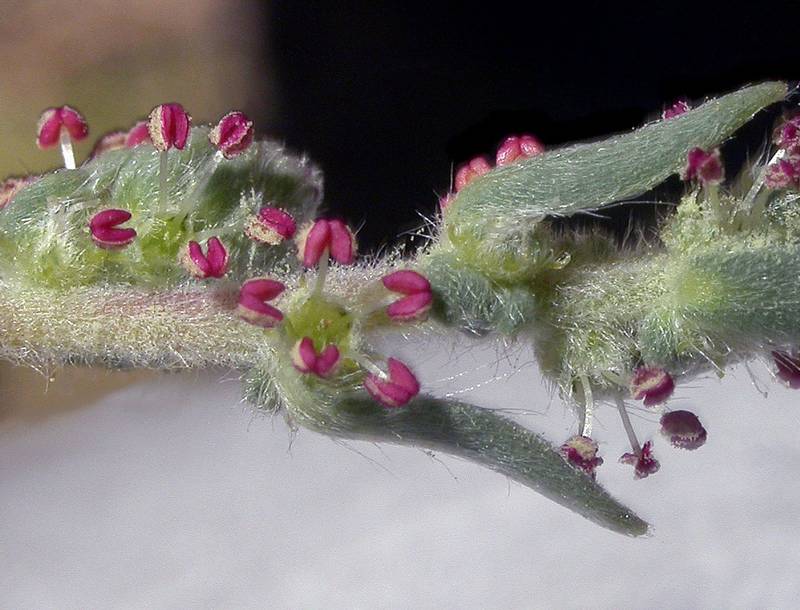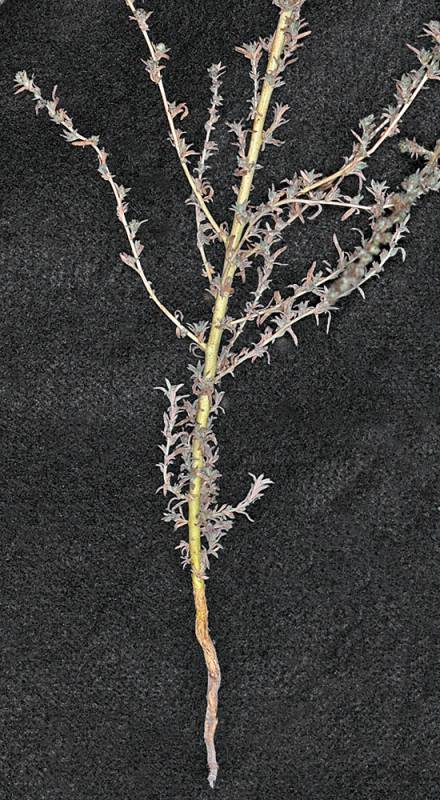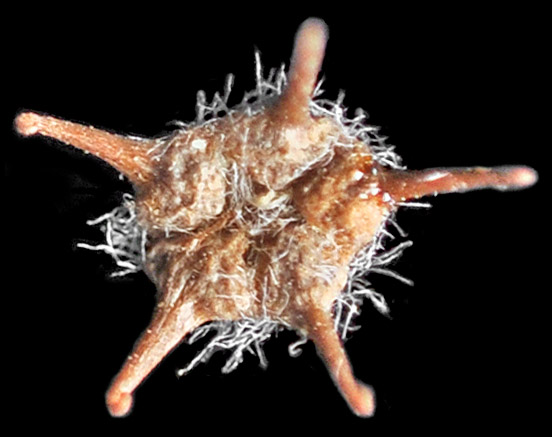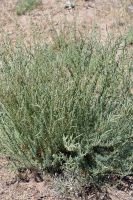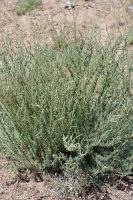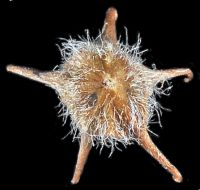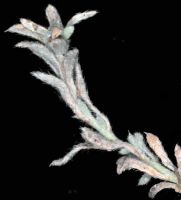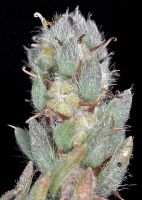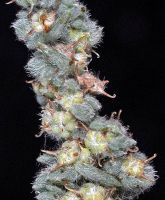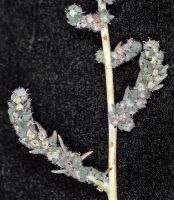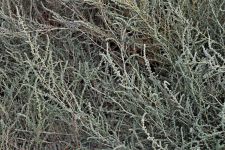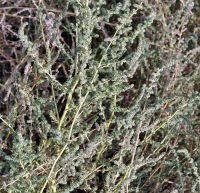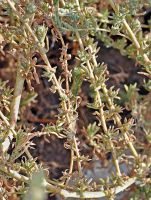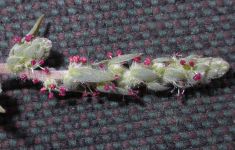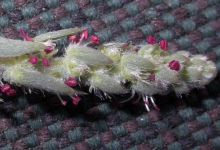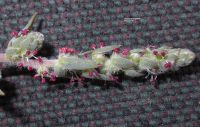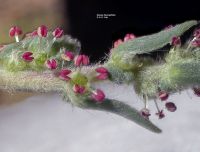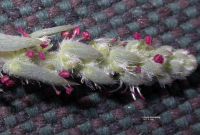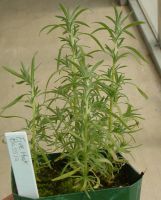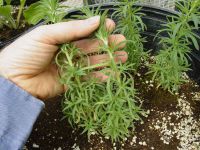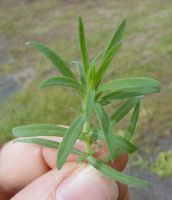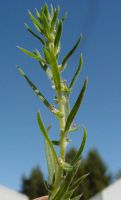Distribution: Occurring east of the Cascades crest in Washington; British Columbia to California, east to the Rocky Mountains and Great Plains.
Habitat: Fields, roadsides, wastelots, and other disturbed habitats.
Flowers: July-September
Origin: Introduced from Eurasia
Growth Duration: Annual
Conservation Status: Not of concern
Pollination: Wind
Erect, simple to freely-branched annual up to 2 m. tall, silky throughout, often reddish-tinged.
Leaves alternate, entire, sessile, linear to linear-lanceolate, 1-4 cm. long and 1-2 mm. wide.
Flowers glomerate in terminal spikes, lateral spikes and axillary clusters; each flower with 1 or 2 small, green-tipped bracts; pistillate and sterile flowers mixed with the perfect flowers; perianth 5-lobed half the length, membranous, 2 mm. broad, completely enclosing the fruit, each of the ovate lobes with a stout, curved to hooked spine up to 2 mm. long; stamens 5, style 1, stigmas 2, elongate.
Fruit flattened, plano-convex
Publication: Revis. Gen. Pl. 2: 547. 1891.
Salsola hyssopifolia Pall.
PNW Herbaria: Specimen records of Bassia hyssopifolia in the Consortium of Pacific Northwest Herbaria database
WA Flora Checklist: Bassia hyssopifolia checklist entry
OregonFlora: Bassia hyssopifolia information
E-Flora BC: Bassia hyssopifolia atlas page
CalPhotos: Bassia hyssopifolia photos

